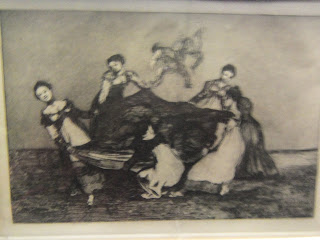As many of you know, I have a younger sister who just turned 11. As she has grown up, it's been interesting for me to see what sorts of things are "cool" for kids her age. Mostly, because the same things that are "cool" now were cool when I was a kid. The hilarious part is that kids don't even know that they haven't invented anything "new."
However, the more time that I spend in Spain, the more I realize that these fads are common to "kid culture" and has nothing to do with where a child grows up.
I'm going to share a couple of the trends I've noticed here, and I'll be curious how many of them resonate with your childhood.
Trends this fall:
- fortune tellers; one of the kids approached me to tell my fortune this fall. He gave me "hints" on which number to choose. I ended up with the fortune: eres muy inteligente (you are very smart). Should this student get an A? I think so!
- jewelry making; all the girls were making friendship bracelets. One of my 4th graders gave me a key chain that she made. It was super chulo (cool).
- trading cards; in this case, kids are actually STILL trading Pokemon cards. The cards are in English so I'm not exactly sure what the kids are doing with the cards other than trading the "cool" looking ones. Same goes for Monster High cards/stickers.
- some games; this is not true of all games, but I've found that Spanish kids also play games like Tic Tac Toe (with slightly different rules; I'll write about that another day), and Rock, Paper, Scissors.
I've heard from a couple sources that you'd like it if I posted more pictures. I don't always take pictures every day, but I'll start posting at least one picture each day--possibly from previous adventures!
 |
| Sunrise in the port of Alicante, Spain |













































